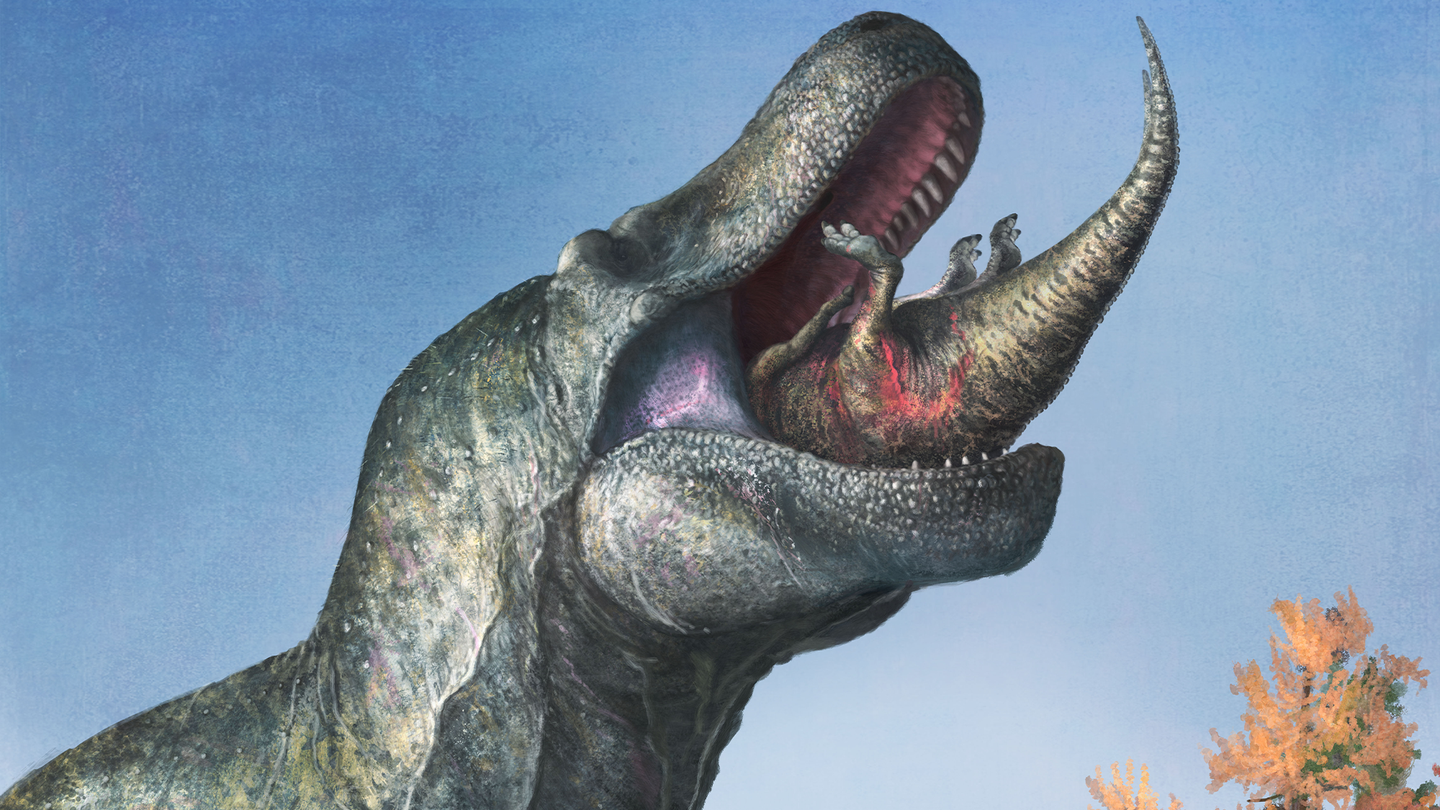
Real predatory dinosaurs like the infamous Tyrannosaurus rex may have looked quite a bit different than their movie star counterparts—and not just because they had feathers. Theropods like the T. rex may have also had completely different mouths. Instead of a lipless grin and permanently exposed teeth with their upper jaw hanging over the lower jaw like a crocodile, the T. rex may have boasted scaly lips covering up their teeth.
The details of this possible oral makeover are described in a new study published March 30 in the journal Science. An international team of researchers say that these lips were more similar to lizards and their relative, the tuatara. The tuatara, the last survivors of an order of reptiles that thrived during the age of the dinosaurs, is a rare reptile that is found only in New Zealand that can live up to 100 years.
[Related: What are dinosaur feathers like?]
The team examined the tooth structure, wear patterns, and jaw morphology of reptiles from both lipped and lipless groups. They found that the theropod mouth functionality and anatomy actually resembled lizards more than crocodiles. The study says this similarity implies the T. rex had lizard-like oral tissues, with scaly lips covering up their teeth.
“Paleontologists often like to compare extinct animals to their closest living relatives, but in the case of dinosaurs, their closest relatives have been evolutionarily distinct for hundreds of millions of years and today are incredibly specialized,” study co-author and Canada’s Royal BC Museum paleontology collections manager and researcher Derek Larson, said a statement. “It’s quite remarkable how similar theropod teeth are to monitor lizards. From the smallest dwarf monitor to the Komodo dragon, the teeth function in much the same way. So, monitors can be compared quite favorably with extinct animals like theropod dinosaurs based on this similarity of function, even though they are not closely related.”

Additionally, therapod lips were likely not muscular, as seen in mammals. Most reptiles have lips that cover up teeth, but can’t be moved independently. Humans and mammals can make all sorts of movements with their lips, like curling them into a snarl or posing with “duck face” in a selfie, but reptile lips can’t.
The study also found that the tooth wear in lipless animals was different from what has been seen in carnivorous dinosaurs. Dinosaurs also had teeth that were no larger than modern lizard teeth when compared to their relative skull size. The teeth were likely not too big to be covered up by scaly lips.
[Related: Is T. rex really three royal species? Paleontologists cast doubt over new claims.]
Another more lizard-like feature in theropods was the distribution of small holes around the jaws that supply blood and nerves to dinosaur gums and tissues in the mouth. When modeling mouth closure in lipless theropod jaws, the team found that the lower jaw either had to crush jaw-supporting bones or disarticulate the jaw joint to seal the mouth.
“As any dentist will tell you, saliva is important for maintaining the health of your teeth. Teeth that are not covered by lips risk drying out and can be subject to more damage during feeding or fighting, as we see in crocodiles, but not in dinosaurs,” said co-author Kirstin Brink, a vertebrate paleontologist at the University of Manitoba, in a statement.
According to the team, this prehistoric lip debate has roots all the way back to the nineteenth century, when scientists began restoring dinosaur fossils. It became more prominent when blockbuster films like Jurassic Park and documentaries took to the screen and have since become deeply rooted in popular culture.
“Curiously, there was never a dedicated study or discovery instigating this change and, to a large extent, it probably reflected preference for a new, ferocious-looking aesthetic rather than a shift in scientific thinking,” paleontologist and co-author Mark Witton from the University of Portsmouth, said in a statement. “We’re upending this popular depiction by covering their teeth with lizard-like lips. This means a lot of our favorite dinosaur depictions are incorrect, including the iconic Jurassic Park T. rex.”
This study provides new insights into how paleontologists can reconstruct both the soft tissues and appearance of extinct species, so that scientists can learn more about how they fed, maintained their tooth health, and even more broad patterns in their evolution.
The post Scaly lips may have hidden the T-rex’s fearsome teeth appeared first on Popular Science.
Articles may contain affiliate links which enable us to share in the revenue of any purchases made.
from Popular Science https://ift.tt/XlBtsqb




0 Comments